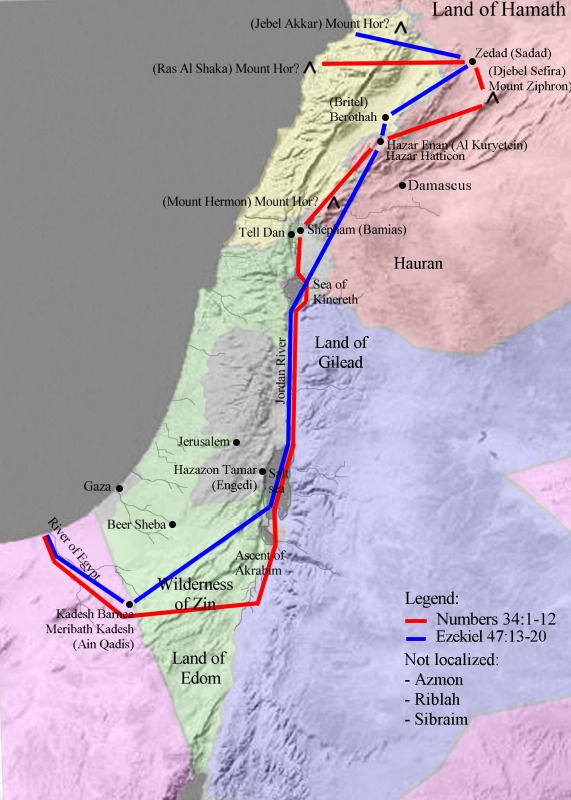The biblical author is a list maker. The biblical author ensures he is as specific as possible in naming names, placing places, and generally ensuring that the bible is as statistically accurate as possible. These specificities lend credence to the stories, and establish benchmarks the reader can understand, even if they are not "historically accurate." To the biblical reader, in fact, the historicity of the statistics would not be as important as the message they conveyed. To the biblical reader, the "truth" of the information is not based on historical accuracy, but literary precision.
Today we will see the layout of the land, as specifically described by the biblical author. We will also learn the names of the Lord's appointed leaders in the promised land. Tomorrow we will receive learn of more statistical data
The Boundaries of the Land: Numbers 34.1-15
The Lord defines the boundaries of Canaan, the promised land. The area given is not historically accurate - Israel never covered the entire area defined by the Lord. Rather, it is an the ideal land of the Israelites as seen by the author. The author certainly did not live in an Israel of this size and in fact, Israel might not have existed as a whole at the time of the writing. So what the writer is trying to do is present the idyllic Israel, a huge territory promised by God promised to his chosen people since Abraham.
I am not going to list the boundaries here because I believe the area would be difficult to visualize. Rather, check out the map of the promised land, or click on the Oremus link above for the biblical passage.
[Thanks, Wikipedia!]
Having established the boundaries of the promised land, the Lord appoints through Moses Eleazar and Joshua as leaders of the people to take over where Aaron and Moses left off. [They function as counterparts for the new generation.] Joshua and Eleazar in turn are to oversee the designated men from each tribe who are to apportion the land of Canaan to the Israelites. These men are (with tribe in parenthesis):
Caleb son of Jephunneh (Judah)
Shemuel son of Ammihud (Simeonites)
Elidad son of Chislon (Benjamin)
Bukki son of Jogli (Danites)
Hanniel son of Ephod (Manassites [Josephites])
Kemuel son of Shiphtan (Ephraimites [Josephites])
Eli-zaphan son of Parnach (Zebulunites)
Paltiel son of Azzan (Issacharites)
Ahihud son of Shelomi (Asherites)
Pedahel son of Ammihud (Naphtalites)
Not mentioned are the Reubenites and the Gadites, who already have their land apportioned. This must come from a different source than the one that states that the Manassites settled among the Reubenites and the Gadites. Therefore there are two coexisting (and interwoven) traditions: one in which the Reubenites and the Gadites settle in the land of the Jazer and Gilead (Num. 32.1), and one in which they are joined by the Manassites.

No comments:
Post a Comment